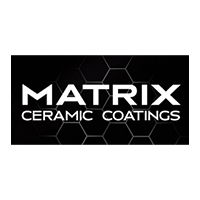October 15, 2025
By Kristian Russell | October 15, 2025
Vehicle detailing isn't just about aesthetics; it is a meticulous process aimed at preserving the car’s value and ensuring a pleasant driving experience. The challenges are manifold as detailers combat daily usage issues and environmental effects, such as road salts. According to Panda Hub, an online auto care resource, auto detailing for heavily soiled vehicles, such as those covered in road salt, can take five hours or longer, underscoring the arduous nature of their work. Let's take a deeper look into each process involved in tackling odors, stains, and pet hair, revealing insights into the art and science of vehicle detailing.
Identifying the Source of Odors
Inspecting Common Problem Areas
A vehicle detailer will begin by scrutinizing the areas most likely to harbor odors within a vehicle. Carpets, seats, and the air conditioning system frequently trap scents due to the materials’ porous nature. A thorough inspection of these areas is pivotal in identifying hidden odors that may not be immediately apparent. This methodical approach ensures that detailers can create a comprehensive treatment plan rather than merely masking odors temporarily. Identifying the correct source is the first step toward a long-lasting solution to maintain the car’s fresh interior.
Using Specialized Tools
To detect hidden sources of odors, a vehicle detailer uses specialized tools such as moisture detectors and UV lights. These high-tech tools allow professionals to uncover issues below the surface level that the naked eye might miss. For instance, moisture detectors can reveal wet or damp areas that contribute to mold or mildew growth and subsequent odors. Along with these, UV lights are perfect for identifying biological residues, alerting detailers to potential issues unseen during initial inspections. These specialized tools amplify a detailer’s ability to ensure thorough cleanliness and freshness inside a vehicle.
Removing Tough Odors
Ozone Treatment
Ozone treatment is a highly effective method utilized by detailers to sanitize the interior of vehicles and eliminate pervasive odors. This treatment works by altering odor-causing molecules through oxidation, thereby eliminating unpleasant smells entirely. As ozone is a gas, it permeates hard-to-reach areas, ensuring comprehensive odor removal throughout the interior. Moreover, it effectively sanitizes the air and surfaces, contributing to a healthier car environment. This method is particularly favored for its efficiency and effectiveness in neutralizing persistent smoke or organic odors.
Activated Charcoal Applications
Activated charcoal is another powerful tool in a detailer’s arsenal for removing stubborn odors from vehicles. Its porous structure allows it to absorb and trap odor-causing molecules, slowly improving air quality over time. Placing charcoal bags strategically within the vehicle can continually neutralize odors for an extended duration. In addition to its effectiveness, activated charcoal is a natural and eco-friendly solution that aligns with consumer preferences for sustainable practices. Many vehicle owners appreciate the simplicity and ongoing freshness that activated charcoal solutions provide.
Tackling Stubborn Stains
Pre-Treatment Evaluation
A critical step in managing stains is conducting an evaluation to understand their nature. This assessment informs the decision-making process regarding which cleaning agents and methods will be the most effective. For example, protein-based stains from food require enzyme cleaners, while ink stains might necessitate solvents. A vehicle detailer will take into account fabric type and stain age to tailor their approach, ensuring no damage occurs to the vehicle’s interior. This thoughtful evaluation helps in selecting the most promising intervention for successful stain removal.
Using Safe, Effective Chemicals
Ensuring the use of safe and effective chemicals is a priority for professional detailers tackling stubborn stains. Eco-friendly and fabric-safe products are increasingly popular because they provide peace of mind regarding user health and environmental impact. These chemicals are carefully designed to break down and lift tough stains without leaving behind residues or causing material damage. Vehicle detailers’ knowledge about chemical composition and specific applications is crucial in selecting the right products. This careful selection aids in maintaining the vehicle’s aesthetic while ensuring passenger safety.
Advanced Stain Lifting Techniques
A vehicle detailer will employ advanced stain-lifting techniques to efficiently remove stubborn stains from various surfaces within the vehicle. Techniques such as blotting, brushing, and heated extraction are common practices that enhance outcomes. By applying heat, detailers can loosen embedded stains, allowing them to lift more quickly from surfaces. Innovative tools and methods are continually being developed, providing detailers with cutting-edge options to combat even the toughest stains. This commitment to innovation ensures high standards of quality and efficacy in stain removal.
Managing Pet Hair Removal
Initial Debris Removal
Tackling pet hair begins with an initial round of debris removal to clear loose strands from the vehicle. Vacuums and sweepers are often employed for this first pass, making it easier to target more stubborn areas later. This preliminary round helps separate pet hair from fabrics, minimizing tangling and clumping. By reducing the overall volume of hair, a vehicle detailer can focus on embedded strands more effectively. This initial step lays the groundwork for a thorough cleaning, enhancing subsequent removal strategies.
Pet Hair Specific Tools
Effective pet hair removal often necessitates the use of specialized tools specifically designed for this stubborn challenge. Rubber brushes, gloves, and pumice stones are invaluable assets in a detailer’s toolkit. These tools work by creating friction or embracing unique textures to lift embedded hair from fabric surfaces. Their efficacy lies in their ability to access hair in hard-to-reach places while being gentle on the material. Incorporating these tools into the detailing process empowers detailers to restore interiors to a hair-free state with precision.
Using Adhesive Tactics
Adhesive tactics are another common strategy for managing pet hair removal in vehicles. Sticky rollers and tape can efficiently pick up hair from fabric surfaces, acting like a magnet that pulls hair away without harming the material. These tools are particularly useful for upholstery where pet hair is deeply embedded, providing a quick and easy way to address the problem. Adhesive methods complement more comprehensive cleaning techniques by ensuring all areas receive attention. Efficient adhesion solutions contribute to the vehicle's cleanliness and are popular for their ease of use.
Maintaining a Fresh Vehicle Interior
Avoiding Future Odor and Stain Build-Up
Maintaining a fresh vehicle interior requires proactive strategies to avoid future odor and stain build-up. Among these strategies, regular cleaning and immediate attention to spills are crucial to prevent them from settling. Protective covers for seats and mats help shield the interior from dirt and spills, preserving its original condition. Employing air fresheners that neutralize, rather than mask, odors also plays a vital role in promoting a pleasant environment. Vehicle owners should remain consistent with these practices to ensure a long-lasting, fresh, and inviting interior.
Professional detailing offers extensive benefits for maintaining a vehicle’s interior, but supplementing it with regular self-cleaning routines is advised. Routine vacuuming of floors and seats, along with dusting surfaces, goes a long way in preserving cleanliness. Scheduling professional detailing sessions periodically ensures thorough cleanliness and provides professional insights into potential interior issues. These sessions are particularly invaluable for heavily soiled vehicles, where a detailer’s expertise is crucial for restoring the interior quality. By integrating both professional and personal maintenance efforts, vehicle owners enjoy a cleaner and healthier driving environment.
Handling odors, stains, and pet hair requires a detailed approach that combines expertise, the right tools, and effective products. Understanding how a professional vehicle detailer manages these challenges helps vehicle owners make informed decisions about interior care, thereby ensuring a clean and inviting vehicle environment. By investing in professional detailing services with Matrix Ceramic Spa, you can enjoy a fresh, pleasant space that enhances their overall driving experience. Get started today by reaching out to us for a free estimate!







